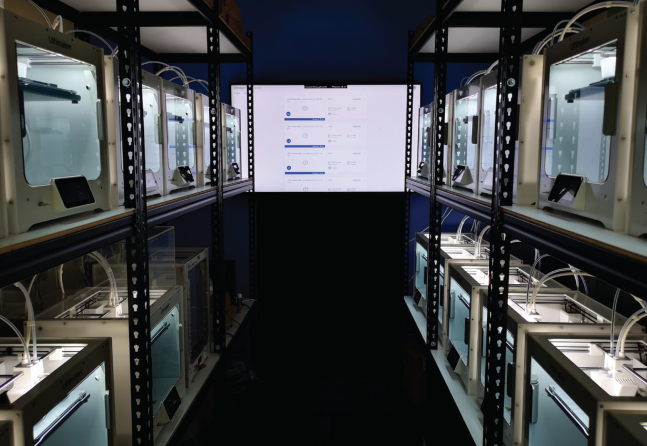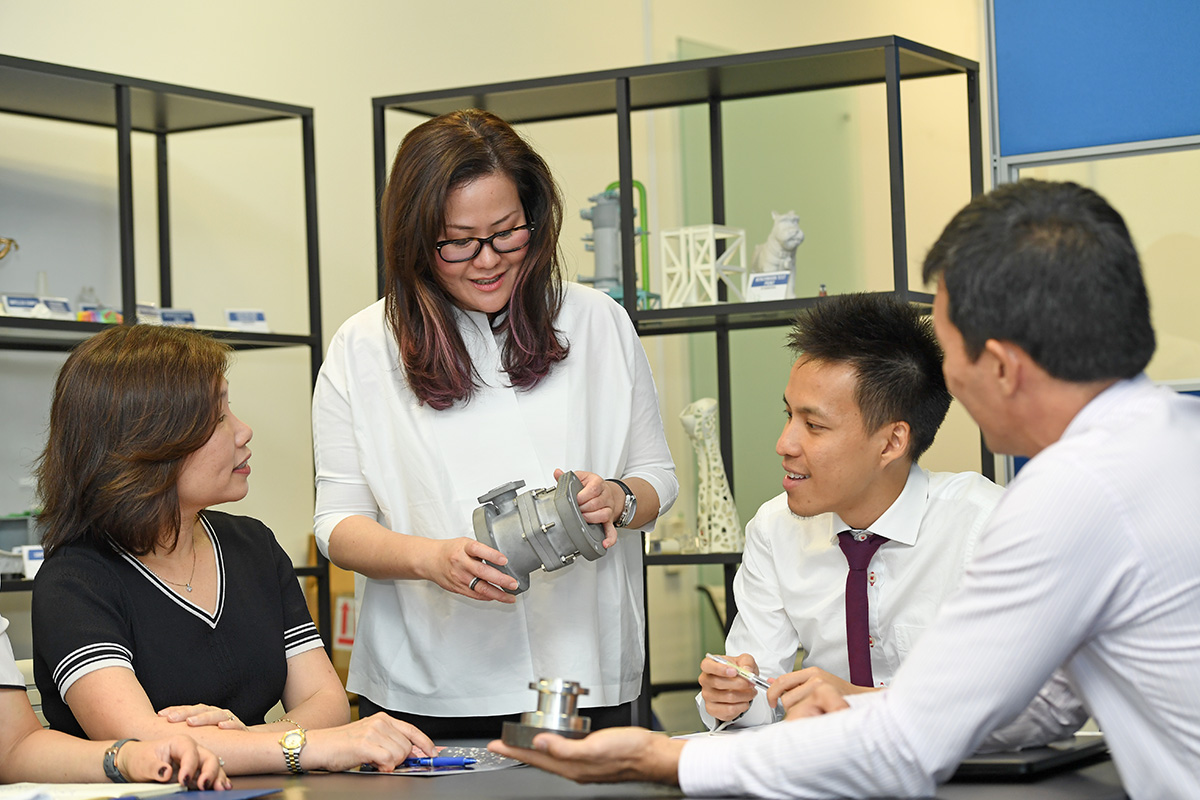Manufacturing bureau 3D Metalforge has partnered with Dutch 3D printer manufacturer Ultimaker to launch a new Fused Filament Fabrication (FFF) 3D printing facility in Singapore.
3D Metalforge has built its print farm, consisting of 21 Ultimaker S3 systems, to ramp up its additive manufacturing capabilities. The production complex, which is reportedly the largest in Southeast Asia, will enable the firm to better cater for its clients in the defence, maritime, medical, and oil and gas industries.
“We are pleased to be selected as the partner of choice by 3D Metalforge,” said Benjamin Tan, Vice President of Ultimaker APAC. “As an established 3D printing company, Ultimaker offers a comprehensive solution to FFF 3D printing needs with its superior printers, industry-leading 3D print preparation and management software, and open material programme.”

The Ultimaker S-Line of 3D printers
Ultimaker’s S-Line of machines includes its S5 system, and S3 3D printer, which it launched at TCT 2019. The S3 represented a significant upgrade on its predecessor, the Ultimaker 3, featuring a number of improvements including an increased build volume of 230 x 190 x 200 mm. Sensors were also added to the filament feed, notifying the user in the event of empty filament spools.
As with all of Ultimaker’s 3D printers, the system is part of the firm’s Material Alliance Program, making it compatible with most 2.85 mm diameter filaments. Material producers Essentium, eSun and Polymaker have all made their products available on the platform via the Cura marketplace. More recently, Lubrizol added three of its TPU thermoplastics to the online platform, that are specifically designed for FFF applications.
Following the launch of Metalforge’s 3D printing complex, Ultimaker will continue to support the company’s growth via a newly-announced partnership. Metalforge’s fleet of S3 3D printers will be supplemented by an ecosystem of Ultimaker’s engineering materials and fleet management and print preparation software.
3D Metalforge’s new 3D printing facility
Metalforge’s suite of Ultimaker S-Line machines are set to operate 24/7, producing prototype parts for customers in a variety of sectors. The company’s clients will benefit from the accelerated production of low-volume components, reducing the time taken to get their products to market.
“With FFF 3D printing, lead times are often halved when compared to conventional methods like injection moulding. This allows companies to have quicker go-to-market strategies,” explained Tan. “A printed prototype also allows close examinations for modifications, and customisations before embarking on mass-printing. This helps companies save costs before committing to bulk print orders.”
Metalforge chose to adopt Ultimaker’s 3D printing technology due to its Material Alliance program. The open platform comprises more than 45 brands, allowing Metalforge to broaden its offering, and to cater to a range of client requirements in different fields.
“Ultimaker has an open solution that allows us to work with over 150 materials. This has enabled us to experiment and/or print with the most suitable material, depending on customers’ needs,” added Matthew Waterhouse, CEO of 3D Metalforge.
The service bureau is currently working on a number of COVID-19-related 3D printing projects, and partnering with Ultimaker provides it with added pandemic-proofing benefits. Utilizing Ultimaker’s Digital Factory software platform, Metalforge is now able to make its supply chain more agile, by diverting production to its different facilities to meet varying customer demand.

Continued additive expansion at 3D Metalforge
Metalforge opened its first metal additive manufacturing facility in Singapore in May 2017. The factory was supported by the Singaporian government’s $2.3 billion Research, Innovation and Enterprise scheme, and opened by the Minister for Trade and Industry, Mr S. Iswaran. Metalforge also signed an agreement with the National Additive Manufacturing Innovation Cluster (NAMIC) to drive additive innovation in the country. The firms have since collaborated on a number of research projects.
In 2018, both companies signed a memorandum of understanding (MoU) with the Maritime and Port Authority of Singapore (MPA), to expand the use of 3D printing in maritime applications. The program aims to introduce a digital manufacturing framework, with the ultimate goal of achieving just-in-time production. By only creating components as and when they are needed, the scheme is designed to eliminate the need for the warehousing of spare parts.
Metalforge’s new print farm in West Singapore represents the latest expansion of its 3D printing capabilities. The company is recruiting eight trainees from the SGUnited Traineeships Programme, as well as four additional engineers, to allow it to continue growing post-pandemic. “We are confident that Ultimaker is well-poised to support 3D Metalforge’s journey in FFF 3D printing,” Tan concluded.
Nominations for the 2020 3D Printing Industry Awards are still open, let us know who is leading the industry now.
The fourth edition of the 3D Printing Industry Awards Trophy Design Competition is now underway. Enter your design for the chance to win a CraftBot Flow 3D printer.
To stay up to date with the latest 3D printing news, don’t forget to subscribe to the 3D Printing Industry newsletter or follow us on Twitter or liking our page on Facebook.
Are you looking for a job in the additive manufacturing industry? Visit 3D Printing Jobs for a selection of roles in the industry.
Featured image shows 3D Metalforge’s print farm of 21 Ultimaker 3D printers. Photo via Ultimaker.



